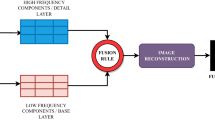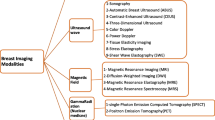Abstract
Objects
To better characterize cervical cancer at 3 T. MRI transverse relaxation patterns hold valuable biophysical information about cellular scale microstructure. Lorentzian modeling is typically used to represent intravoxel frequency distributions, resulting in mono-exponential decay of reversible transverse relaxation. However, deviations from mono-exponential decay are expected theoretically and observed experimentally.
Materials and methods
We compared the information content of four models of signal attenuation with reversible transverse relaxation. Biological phantoms and six women with cervical squamous cell carcinoma were imaged using a gradient-echo sampling of the spin-echo (GESSE) sequence. Lorentzian, Gaussian, Voigt, and Symmetric α-Stable (SAS) models were ranked using Akaike’s Information Criterion (AIC), and the model retaining the highest information content was identified at each voxel as the best model.
Results
The Lorentzian model resulted in information loss in large fractions of the phantoms and cervix. Gaussian and SAS models frequently had higher information content than the Lorentzian in much of the areas of interest. The Voigt model rarely surpassed the three other models in terms of information content.
Discussion
Gaussian and SAS models provide better fitting of data in much of the human cervix at 3 T. Minimizing information loss through improved tissue modeling may have important implications for identifying reliable biomarkers of tumor hypoxia and iron deposition.










Similar content being viewed by others
References
Schenck JF (1996) The role of magnetic susceptibility in magnetic resonance imaging: MRI magnetic compatibility of the first and second kinds. Med Phys 23(6):815–850
Hopkins JA, Wehrli FW (1997) Magnetic susceptibility measurement of insoluble solids by NMR: magnetic susceptibility of bone. Magn Reson Med 37(4):494–500
Yablonskiy DA (1998) Quantitation of intrinsic magnetic susceptibility-related effects in a tissue. Magn Reson Med 39:417–428
Yablonskiy DA, Haacke EM (1994) Theory of NMR signal behavior in magnetically inhomogeneous tissues: the static dephasing regime. Magn Reson Med 32:749–763
Kiselev VG, Novikov DS (2018) Transverse NMR relaxation in biological tissues. Neuroimage 182:149–168
Kiselev VG, Strecker R, Ziyeh S, Speck O, Hennig J (2005) Vessel size imaging in humans. Magn Reson Med 53(3):553–563
Ma J, Wehrli FW (1996) Method for image-based measurement of the reversible and irreversible contribution to the transverse-relaxation rate. J Magn Reson B 111(1):61–69
Yablonskiy DA, Haacke EM (1997) An MRI method for measuring T2 in the presence of static and RF magnetic field inhomogeneities. Magn Reson Med 37(6):872–876
Slotboom J, Boesch C, Kreis R (1998) Versatile frequency domain fitting using time domain models and prior knowledge. Magn Reson Med 39(6):899–911
Steidle G, Schick F (2021) A new concept for improved quantitative analysis of reversible transverse relaxation in tissues with variable microscopic field distribution. Magn Reson Med 85(3):1493–1506
Balasubramanian M, Polimeni JR, Mulkern RV (2019) In vivo measurements of irreversible and reversible transverse relaxation rates in human basal ganglia at 7 T: making inferences about the microscopic and mesoscopic structure of iron and calcification deposits. NMR Biomed 32(11):e4140
Mulkern RV, Balasubramanian M, Mitsouras D (2015) On the Lorentzian versus Gaussian character of time-domain spin-echo signals from the brain as sampled by means of gradient-echoes: implications for quantitative transverse relaxation studies. Magn Reson Med 74(1):51–62
Zapp J, Domsch S, Weingärtner S, Schad LR (2017) Gaussian signal relaxation around spin echoes: Implications for precise reversible transverse relaxation quantification of pulmonary tissue at 1.5 and 3 Tesla. Magn Reson Med 77(5):1938–1945
Ciris PA, Balasubramanian M, Seethamraju RT, Tokuda J, Scalera J, Penzkofer T, Fennessy FM, Tempany-Afdhal CM, Tuncali K, Mulkern RV (2016) Characterization of gradient echo signal decays in healthy and cancerous prostate at 3T improves with a Gaussian augmentation of the mono-exponential (GAME) model. NMR Biomed 29(7):999–1009
Dou W, Mastrogiacomo S, Veltien A, Alghamdi HS, Walboomers XF, Heerschap A (2018) Visualization of calcium phosphate cement in teeth by zero echo time (1) H MRI at high field. NMR Biomed 31(2):e3859
Spees WM, Yablonskiy DA, Oswood MC, Ackerman JJ (2001) Water proton MR properties of human blood at 1.5 Tesla: magnetic susceptibility, T(1), T(2), T*(2), and non-Lorentzian signal behavior. Magn Reson Med 45(4):533–542
Marshall I, Higinbotham J, Bruce S, Freise A (1997) Use of Voigt lineshape for quantification of in vivo 1H spectra. Magn Reson Med 37(5):651–657
Zhang L, Zhao Y, Chen Y, Bie C, Liang Y, He X, Song X (2019) Voxel-wise Optimization of Pseudo Voigt Profile (VOPVP) for Z-spectra fitting in chemical exchange saturation transfer (CEST) MRI. Quant Imaging Med Surg 9(10):1714–1730
Lim K, Chan P, Dinniwell R, Fyles A, Haider M, Cho YB, Jaffray D, Manchul L, Levin W, Hill RP, Milosevic M (2008) Cervical cancer regression measured using weekly magnetic resonance imaging during fractionated radiotherapy: radiobiologic modeling and correlation with tumor hypoxia. Int J Radiat Oncol Biol Phys 70(1):126–133
Grigsby PW, Malyapa RS, Higashikubo R, Schwarz JK, Welch MJ, Huettner PC, Dehdashti F (2007) Comparison of molecular markers of hypoxia and imaging with (60)Cu-ATSM in cancer of the uterine cervix. Mol Imaging Biol 9(5):278–283
Fyles A, Milosevic M, Pintilie M, Syed A, Levin W, Manchul L, Hill RP (2006) Long-term performance of interstial fluid pressure and hypoxia as prognostic factors in cervix cancer. Radiother Oncol 80(2):132–137
Fyles A, Milosevic M, Hedley D, Pintilie M, Levin W, Manchul L, Hill RP (2002) Tumor hypoxia has independent predictor impact only in patients with node-negative cervix cancer. J Clin Oncol 20(3):680–687
Loncaster JA, Carrington BM, Sykes JR, Jones AP, Todd SM, Cooper R, Buckley DL, Davidson SE, Logue JP, Hunter RD, West CM (2002) Prediction of radiotherapy outcome using dynamic contrast enhanced MRI of carcinoma of the cervix. Int J Radiat Oncol Biol Phys 54(3):759–767
Lyng H, Sundfor K, Rofstad EK (2000) Changes in tumor oxygen tension during radiotherapy of uterine cervical cancer: relationships to changes in vascular density, cell density, and frequency of mitosis and apoptosis. Int J Radiat Oncol Biol Phys 46(4):935–946
Hockel M, Knoop C, Schlenger K, Vorndran B, Baussmann E, Mitze M, Knapstein PG, Vaupel P (1993) Intratumoral pO2 predicts survival in advanced cancer of the uterine cervix. Radiother Oncol 26(1):45–50
Lyng H, Sundfor K, Trope C, Rofstad EK (2000) Disease control of uterine cervical cancer: relationships to tumor oxygen tension, vascular density, cell density, and frequency of mitosis and apoptosis measured before treatment and during radiotherapy. Clin Cancer Res 6(3):1104–1112
Charra-Brunaud C, Harter V, Delannes M, Haie-Meder C, Quetin P, Kerr C, Castelain B, Thomas L, Peiffert D (2012) Impact of 3D image-based PDR brachytherapy on outcome of patients treated for cervix carcinoma in France: results of the French STIC prospective study. Radiother Oncol 103(3):305–313
Hoskin PJ, Carnell DM, Taylor NJ, Smith RE, Stirling JJ, Daley FM, Saunders MI, Bentzen SM, Collins DJ, d’Arcy JA, Padhani AP (2007) Hypoxia in prostate cancer: correlation of BOLD-MRI with pimonidazole immunohistochemistry-initial observations. Int J Radiat Oncol Biol Phys 68(4):1065–1071
Chopra S, Foltz WD, Milosevic MF, Toi A, Bristow RG, Menard C, Haider MA (2009) Comparing oxygen-sensitive MRI (BOLD R2*) with oxygen electrode measurements: a pilot study in men with prostate cancer. Int J Radiat Biol 85(9):805–813
Hallac RR, Ding Y, Yuan Q, McColl RW, Lea J, Sims RD, Weatherall PT, Mason RP (2012) Oxygenation in cervical cancer and normal uterine cervix assessed using blood oxygenation level-dependent (BOLD) MRI at 3T. NMR Biomed 25(12):1321–1330
Li XS, Fan HX, Fang H, Song YL, Zhou CW (2015) Value of R2* obtained from T2*-weighted imaging in predicting the prognosis of advanced cervical squamous carcinoma treated with concurrent chemoradiotherapy. J Magn Reson Imaging 42(3):681–688
Olivero JJ, Longbothum RL (1977) Empirical fits to the Voigt line width: A brief review. J Quant Spectrosc Radiat Transfer 17(2):233–236
Armstrong BH (1967) Spectrum line profiles: The Voigt function. J Quant Spectrosc Radiat Transfer 7(1):61–88
Odicino F, Pecorelli S, Zigliani L, Creasman WT (2008) History of the FIGO cancer staging system. Int J Gynaecol Obstet 101(2):205–210
Gudbjartsson H, Patz S (1995) The Rician distribution of noisy MRI data. Magn Reson Med 34(6):910–914
Burnham KP, David RA (2002) Model selection and multimodel inference. A practical information-theoretic approach, 2nd edn. Springer-Verlag, New York
Bourne RM, Panagiotaki E, Bongers A, Sved P, Watson G, Alexander DC (2014) Information theoretic ranking of four models of diffusion attenuation in fresh and fixed prostate tissue ex vivo. Magn Reson Med 72(5):1418–1426
Stanisz GJ, Odrobina EE, Pun J, Escaravage M, Graham SJ, Bronskill MJ, Henkelman RM (2005) T1, T2 relaxation and magnetization transfer in tissue at 3T. Magn Reson Med 54(3):507–512
Medved M, Chatterjee A, Devaraj A, Harmath C, Lee G, Yousuf A, Antic T, Oto A, Karczmar GS (2021) High spectral and spatial resolution MRI of prostate cancer: a pilot study. Magn Reson Med 86(3):1505–1513
Hernando D, Vigen KK, Shimakawa A, Reeder SB (2012) R*(2) mapping in the presence of macroscopic B(0) field variations. Magn Reson Med 68(3):830–840
Yang X, Sammet S, Schmalbrock P, Knopp MV (2010) Postprocessing correction for distortions in T2* decay caused by quadratic cross-slice B0 inhomogeneity. Magn Reson Med 63(5):1258–1268
Acknowledgements
The authors would like to thank Prof. Robert Mulkern and Dr. Mukund Balasubramanian for the GESSE pulse sequence and suggestions, and Dr. Akila Viswanathan for clinical guidance.
Funding
The authors did not receive support from any organization for the submitted work.
Author information
Authors and Affiliations
Corresponding author
Ethics declarations
Conflict of interest
The authors have no relevant financial or non-financial interests to disclose.
Ethical approval
Ethics approval was obtained from the ethics committee of Brigham and Women’s Hospital, Boston, MA. The procedures used in this study adhere to the tenets of the Declaration of Helsinki.
Informed consent
Informed consent was obtained from all participants included in the study.
Additional information
Publisher's Note
Springer Nature remains neutral with regard to jurisdictional claims in published maps and institutional affiliations.
Rights and permissions
Springer Nature or its licensor holds exclusive rights to this article under a publishing agreement with the author(s) or other rightsholder(s); author self-archiving of the accepted manuscript version of this article is solely governed by the terms of such publishing agreement and applicable law.
About this article
Cite this article
Ciris, P. Information theoretic evaluation of Lorentzian, Gaussian, Voigt, and symmetric alpha-stable models of reversible transverse relaxation in cervical cancer in vivo at 3 T. Magn Reson Mater Phy 36, 119–133 (2023). https://doi.org/10.1007/s10334-022-01035-1
Received:
Revised:
Accepted:
Published:
Issue Date:
DOI: https://doi.org/10.1007/s10334-022-01035-1




